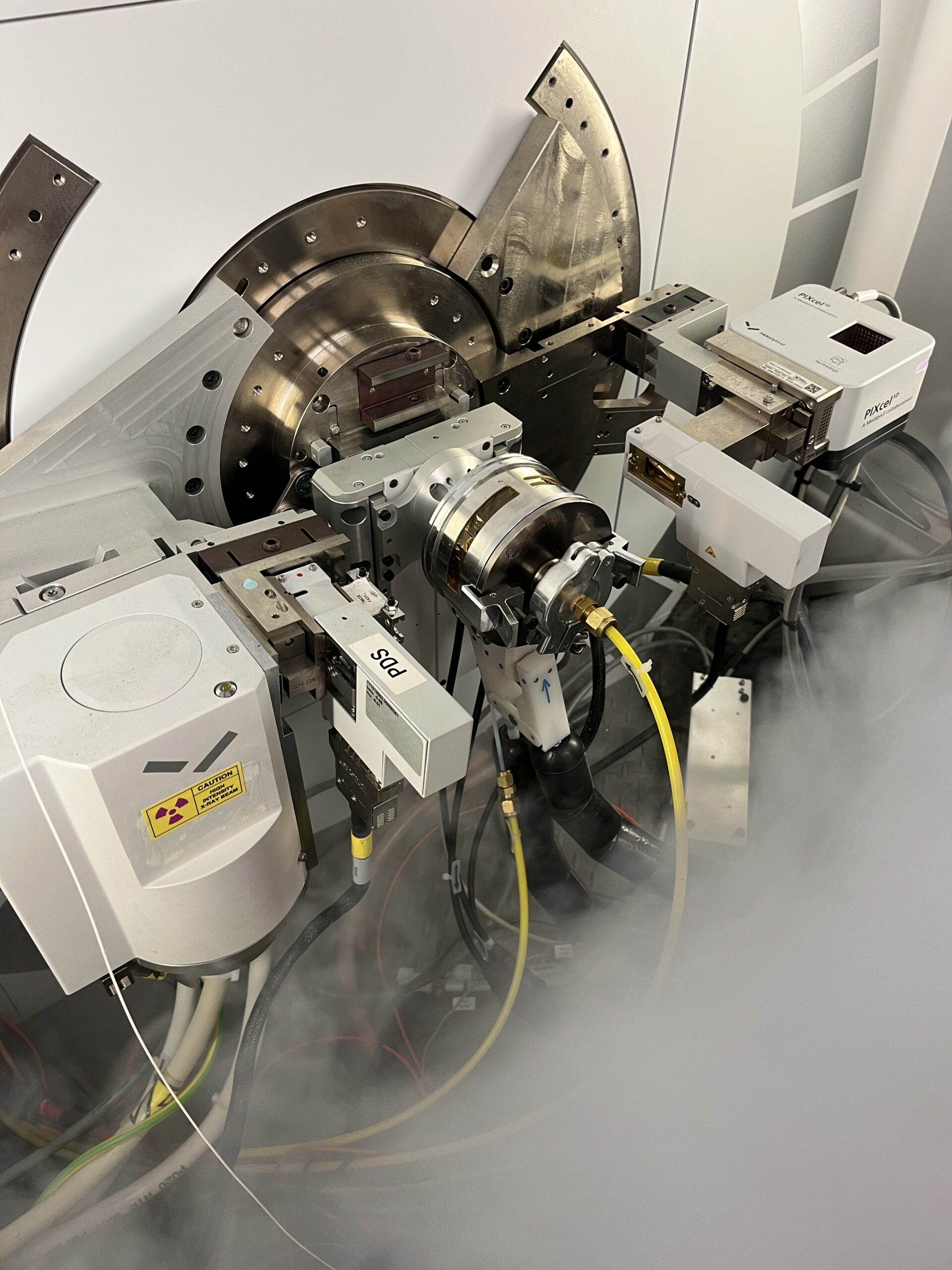Meet Noah Holzapfel

I am a Research Scholar in the Materials Science and Engineering Department, working with Prof. Veronica Augustyn since January 2023. I grew up in Columbus, Ohio and I received my Ph.D. from the Department of Chemistry and Biochemistry at The Ohio State University in 2022. For fun, I enjoy disc golfing and playing video games as well as traveling and hiking with my wife. For my career goals, I am interested in pursuing either a tenure-track faculty position or a research scientist position at a national laboratory.
What instruments are you using for your research and why do you like them?
The instruments I use most often for my research are the powder X-ray diffractometers. I most often use the Panalytical Empyrean XRD due to the variety of in situ sample stages that are available through the AIF.
What have you been researching?
My research looks to understand the structural and electronic transitions that occur in transition metal oxides upon cation-coupled electron transfer reactions. These types of reactions form the basis for a variety of industrially relevant technologies, the most prominent being Li-ion batteries. I am especially interested in materials systems which undergo proton-coupled electron transfer reactions. The ability for transition metal oxides to reversibly insert both protons and electrons is a promising property to exploit for designing new hydrogen storage materials, hydrogen transfer catalysts, and proton intercalation electrodes for aqueous battery systems.
Advancing electrochemical energy storage devices (batteries, capacitors, fuel cells) is essential to addressing global energy concerns and transitioning to more sustainable infrastructure. My research goals are centered around providing fundamental insights into electrochemical reaction mechanisms (i.e., electrode degradation, interfacial electrolyte interactions, ion-insertion reactions) which can help us better design materials for electrochemical energy storage devices.

What have you learned from your experience at AIF?
Through the AIF X-ray diffraction lab and the various in situ sample stages available, we can study how materials behave at different temperatures, under reactive gas atmospheres, and (most recently) during electrochemical cycling. These types of measurements allow us to probe the structural evolution of a material under dynamic environmental conditions. This gives us a better idea of how a material behaves under simulated operating conditions which is critical for identifying electrochemical reaction mechanisms. With all of these resources available, I have learned a significant amount about high-throughput experimentation methods and data analysis.
Best thing about AIF in 5 words or less?
Helpful staff and impressive instrumentation
Is there a staff member at AIF that has helped you?
Jenny Forrester
- Categories: